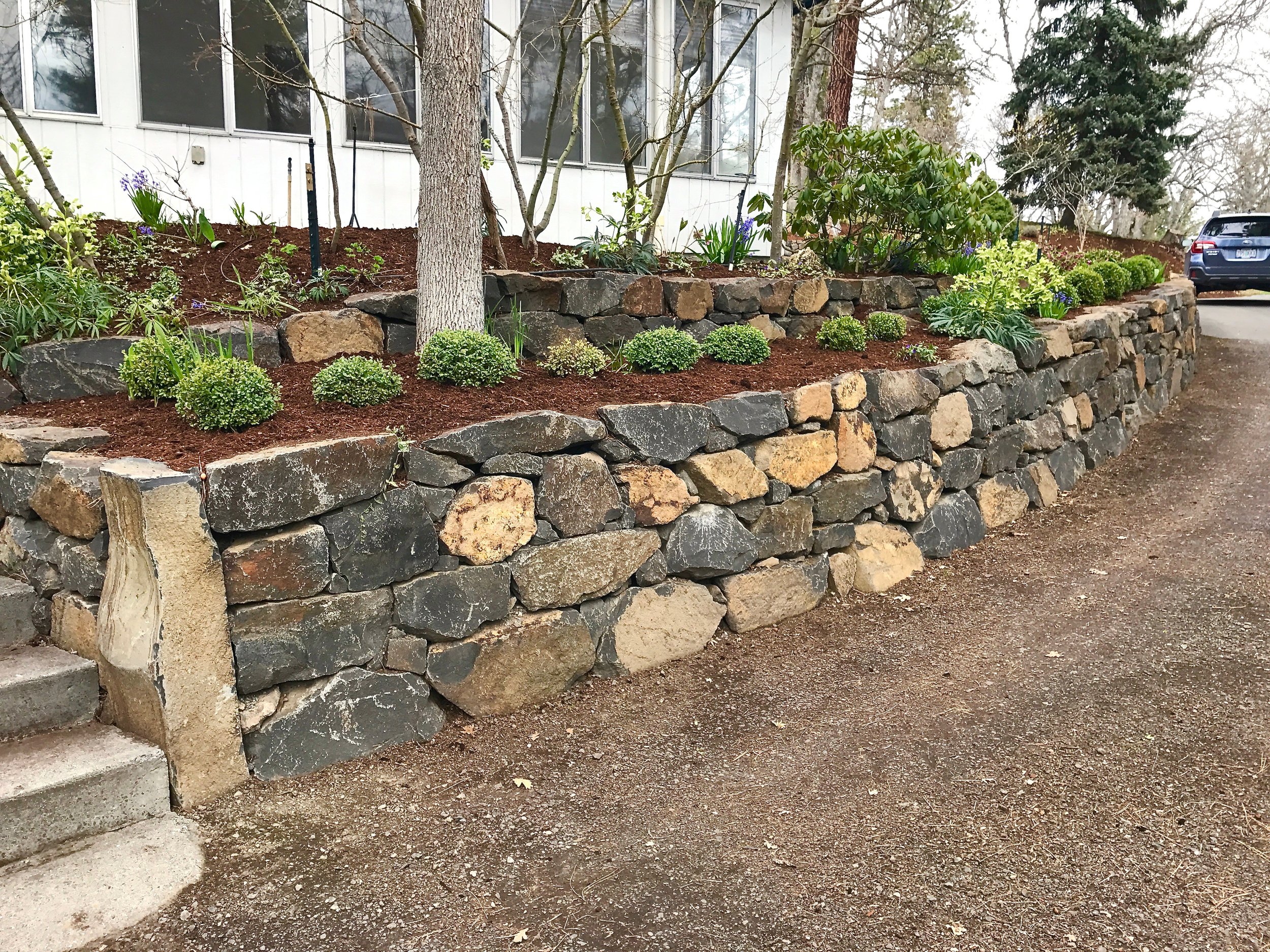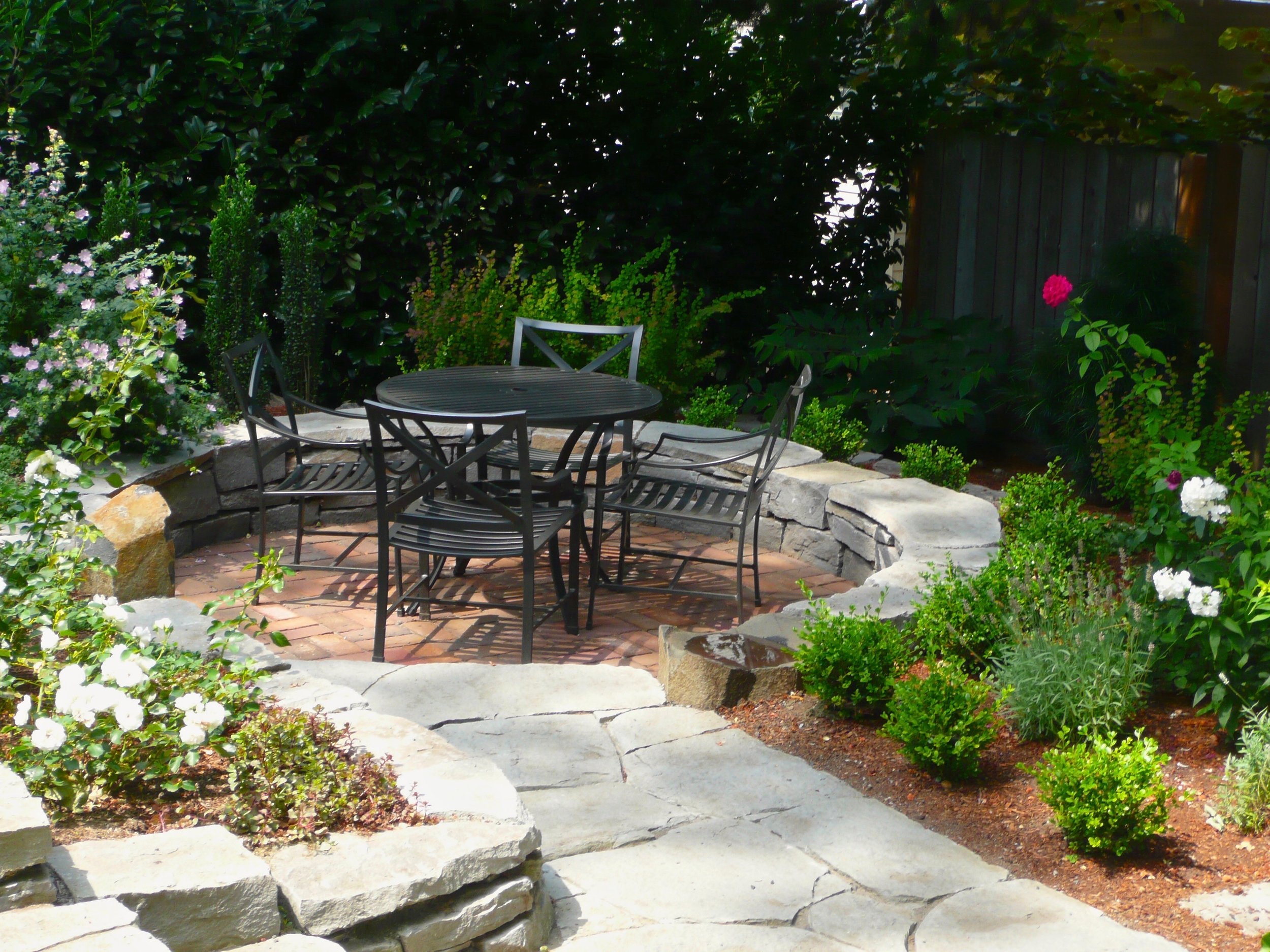Stone in the Garden
Stone has been used to create buildings, structures and sculpture since the dawn of civilization. Stone is permanent and durable, outlasting any other substance in longevity, ornamentation, and beauty. It seamlessly blends and enhances almost any landscape, adding structure and a timeless “old world charm”. Historically, mainly locally available stone was used, but at times the stone was shipped long distances. Numerous types of stone for landscape use are available today, varying in suitability and strength. They come in all shapes, sizes, colors and textures. Which stone is best suited depends on the type of project, architecture of the home or building, the surroundings, as well as your personal preferences and budget. With sustainability becoming an ever increasing focus, the most local stone may be chosen, if the correct fit.
At Mount Hood Gardens, our own stonemasons have constructed numerous stonework projects in the Mid-Columbia, among them extensive dry-stack and free-standing stone walls, flagstone patios, and stone steps. Please explore the photos below for examples of our work.
Design Considerations
-
Stone in the garden and landscape is used to build retaining and free-standing walls, flagstone patios, stone steps, columns and pillars, water features, benches, planters and sculpture. Stone may be dry-stacked, dry-laid, or joined with mortar. In all cases, good workmanship and a solid foundation are essential, as is selecting durable stone. Stones should be tightly and securely fitted, with each stone set to reveal its individual beauty. Every stone has its own identity. Locally available stone is generally more economical and sustainable. Several types of basalt and flagstone are indigenous to the Mid-Columbia, along with different kinds of river rock and glacial boulders.
-
From a design standpoint, two or a maximum of three different types of stone should be combined, with one principle signature stone being used throughout the landscape, if at all possible. However, some contrast in texture is important and too many stones of exactly the same shade can blur into an amorphous mass. Stone walls around a patio can serve as sitting walls. Flagstone patios with wider gaps between the stones can be planted with Creeping Thyme or other drought-tolerant ground cover plants. With tighter path and patio stone joints, polymeric sand can be used to fill the joints, allowing for a more flexible material than mortar. Stone used for walls or patios sets off and enhances any planting, being a delightful and versatile companion to a large variety of plants.
-
Stone as a building material is initially more costly than concrete or brick, but its permanence and lasting beauty add an enduring element to the landscape. Often even small, refined touches of stone enhance the garden.
Stone Walls
Boulder retaining wall with native boulders from The Dalles
Mossy, local volcanic boulders create the raised planting beds
Beautiful stone retaining walls using Corbett Basalt terrace this steep hillside in downtown Hood River. They blend with the bottom original, blocky stone wall
Near the home on top, two retaining walls rise above the the sunken patio. The newly-planted shade plantings will frame the patio
The block wall around this backyard patio was veneered with Bluestone. The grass in the lower area to the right was replaced with a circular pavers center surrounded by dry-laid Bluestone
Local basalt creates the retaining wall for this small sunken backyard patio in Hood River
The steep west side was terraced and retained with basalt dry-stack walls. Comfortable bluestone steps with basalt risers lead up the hillside, Hood River
At the same property, the steep upper SE side was multiple-terraced, furnishing an alternate access
Newly-rebuilt retaining walls at Oak Street Hotel in Hood River. Some of the previous flagstone was blended with new Montana Buff stone
Montana Buff stone and local boulders form an interesting and textural stone symphony, Hood River
Stone Patios and Stone Features
Bluestone patio and veneer-stone piers, owner's home
All set up for a music jam, owner's patio
Shady sunken patio with dry-stack basalt wall, Hood River
The larger patio consists of circle Holland pavers and Bluestone. Large boulders form the enclosure for the adjacent informal fire pit patio
Sunset Gold quarzite was used to veneer the landing gathering area, and then continued as a dry-laid path
The dry-laid floor of this gorgeous sunken patio utilizes the same quarzite stone
Patios do not have to be large to be useful
Stepping stones in lawn, leading to a series of concrete patios



















